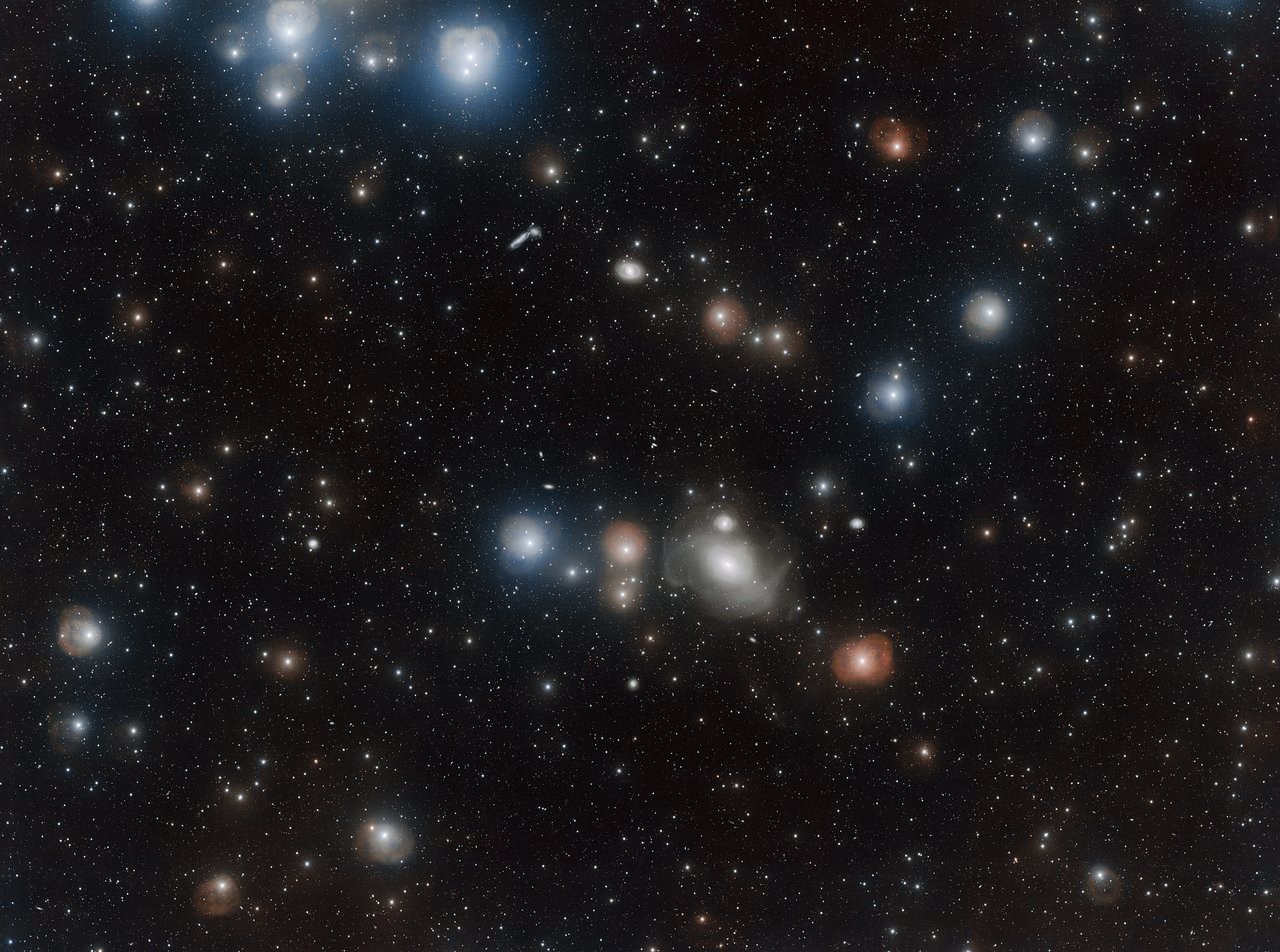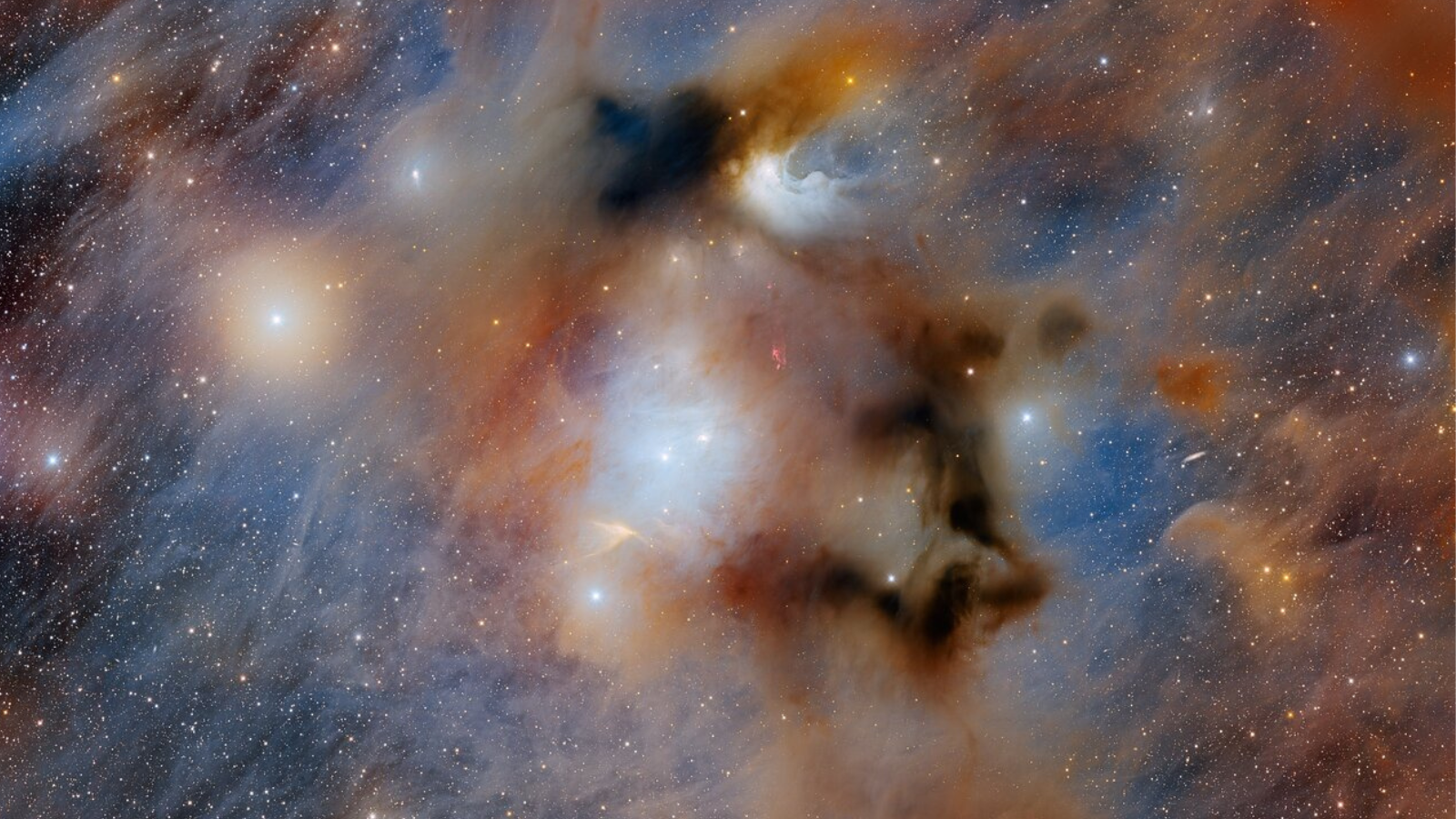Nearby Galaxy Cluster's Violent Past Captured in Unprecedented Detail (Photo)
A violent galaxy that shreds its neighbors and throws out their remains leaves wispy trails in the most detailed picture ever taken of the Fornax Cluster, one of the closest galaxy clusters to the Milky Way.
The images come courtesy of the Very Large Telescope array at the European Southern Observatory's Paranal Observatory in the Atacama Desert of Chile — specifically, from the VLT Survey Telescope. The observatory is currently conducting a detailed survey of the Fornax Cluster.

Although astronomers consider the Fornax Cluster close, that's a relative term; this cluster of 58 galaxies is a whopping 62 million light-years from Earth. But that's close enough to be useful to astronomers. The Fornax Cluster is a dynamic area of space with many important galactic members, perhaps none more notable than Galaxy NGC 1316, or Fornax A.
According to a new video from ESO, Fornax A has been consuming its neighbors. The galaxy shreds nearby galaxies as it siphons off their material, ejecting stars into the void and leaving the wispy trails visible in ESO's image. The galaxy's violent past, combined with its proximity to Earth, provides astronomers an excellent case to study galactic mergers, according to the video.

The influx of matter from these mergers fuels a massive black hole at the galaxy's center, according to ESO. The black hole, which is 150 million times the mass of our sun, then shoots jets of matter and radiation into space. As a result, Fornax A is the brightest source of radio waves in the cluster, and the fourth brightest in the entire sky.
Fornax A has also hosted four observed Type Ia supernovas. These massive explosions, which are triggered by the deaths of white dwarf stars, are thought to always shine with the same intensity at their brightest point. For this reason, astronomers have used them to measure distances: The fainter they are, the farther they must be, ESO officials said.
Email Harrison Tasoff at htasoff@space.com or follow him @harrisontasoff. Follow us @Spacedotcom, Facebook and Google+. Original article on Space.com.
Get the Space.com Newsletter
Breaking space news, the latest updates on rocket launches, skywatching events and more!
Join our Space Forums to keep talking space on the latest missions, night sky and more! And if you have a news tip, correction or comment, let us know at: community@space.com.

Harrison Tasoff is a science journalist originally from Los Angeles. He graduated from NYU’s Science, Health, and Environmental Reporting Program after earning his B.A. in mathematics at Swarthmore College. Harrison covers an array of subjects, but often finds himself drawn to physics, ecology, and earth science stories. In his spare time, he enjoys tidepooling, mineral collecting, and tending native plants.
